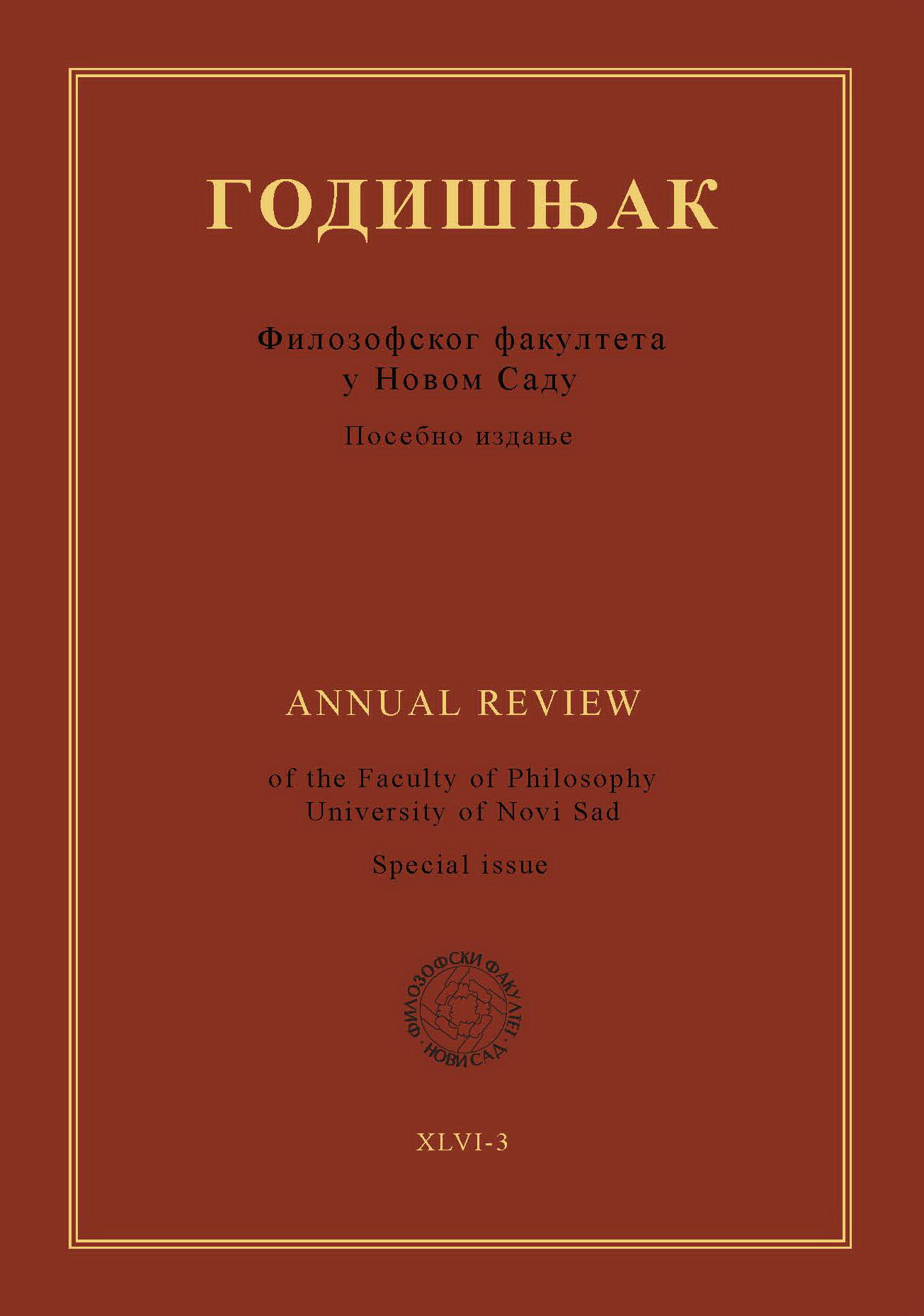CONCEPT OF SPACE IN THE PLAYS BETWEEN WORLDS BY ÉRIC-EMMANUEL SCHMITT AND NO EXIT BY JEAN-PAUL SARTRE
Main Article Content
Abstract
In the present work, we tried to analyze the role of the space in the play Between Worlds (1999) by Éric-Emmanuel Schmitt by comparing it with the play No Exit (1944) written by Jean-Paul Sartre. We used Sartre’s play as a guide and starting point in the analysis of space in the Schmitt’s, given numerous intertextual relationships connecting them. The intertextuality is present not only on the level of content, but also on the philosophical level: both plays reconsider the questions of human existence and death, God, mysticism. The concept of closed, but active space is very important for better understanding of the main ideas that authors tend to offer: Sartre places his characters in a plain room furnished in Second Empire style which represents the hell, while Schmitt chooses a hotel between worlds, a hospital somewhere between life and death. Starting from different classifications of theatrical space by Hélène Laliberté, we attempted to determine the mimetic’s function of space or, in other words, define the figurative role of space in the action progression. For a better understanding of the role that the closed space has in both plays, we also referred to Anne Ubersfeld’s researches of theatrical space, especially to two types of space she defines as the scenic place (le lieu scénique), the place that is ”materially defined” (Ubersfeld, 1996a : 37), and the dramatic space (l’espace dramatique) that represents an abstraction ”including not only the signs of the representation, but also the whole virtual spatiality of the text, even what is intended to be the off-stage” (Ubersfeld, 1996a : 37). The purpose of the present paper was to analyze the function of those two types of space in the Schmitt's play and to point out their similarities and differences in relation to the Sartre's drama.
Downloads
Article Details

This work is licensed under a Creative Commons Attribution-ShareAlike 4.0 International License.
References
Bachelard, G. (1961). La Poétique de l’espace. Paris : PUF.
Bjelić, N. (2021). La rencontre avec Dieu : lecture des Pensées de Pascal dans l’œuvre d’Éric-Emmanuel Schmitt. In: Bojović, D. (éd.) (2021). Crkvene studije. No 18. Niš : Centar za crkvene studije, Univerzitet u Nišu, Centar za vizantijsko-slovenske studije, Međunarodni centar za pravoslavne studije. 473–484.
Carpentier, M.–Yadan, T. (2005). L’optimiste volontaire. Interview avec Éric-Emmanuel Schmitt. Consulté le 16 juin 2015, disponible sur :
http://evene.lefigaro.fr/livres/actualite/interview-d-eric-emmanuel-schmitt-170.php.
David, M. (1995). Le théâtre. Paris : Belin.
Hsieh, Y. (2006). Éric-Emmanuel Schmitt ou la philosophie de l’ouverture. Birmingham : Summa Publications inc.
Hugo, V. (2009). Préface de Cromwell. Paris : Larousse, Petits classiques.
Jevtović, V. (2006). Sartrova književnost kao medijum njegove filozofije. In : Novaković, J. (éd.) (2006). Žan-Pol Sartr u svom i u našem vremenu. Beograd : Filološki fakultet. 133–144.
Laliberté, H. (1998). Pour une méthode d’analyse de l’espace dans le texte dramatique. In : L’annuaire théâtral, 23. Montréal : Université du Québec, Société québécoise d’études théâtrales (SQET), Figura–Centre de recherche sur le texte et l’imaginaire. 133–145. https://doi.org/10.7202/041350ar DOI: https://doi.org/10.7202/041350ar
Pascal, Blaise (1995). Pensées. Paris : Bookking International.
Ryngaert, J.-P. (2007). Lire le théâtre contemporain. Paris : Dunod.
Sarrazac, J.-P. (2012). Poétique du drame moderne. De Henrik Ibsen à Bernard-Marie Koltès. Paris : Seuil.
Sartre, J.-P. (1994). Huis clos suivi de Les Mouches. Paris : Gallimard.
Sartre, J.-P. (1973). Sartre, un théâtre de situations. Textes rassemblés, établis, présentés et annotés par Michel Contat et Michel Rybalka. Paris : Gallimard.
Schmitt, É.-E. (2007). Hôtel des Deux Mondes. In : Schmitt, É.-E. (2007). Théâtre 3. Paris : Albin Michel.
Ubersfeld, A. (1996a). Les termes clés de l’analyse du théâtre. Paris : Seuil.
Ubersfeld, A. (1996b). Lire le théâtre. Tome 1. Paris : Lettres Belin SUP.
Verstraeten, Pierre. (2005). La problématique de la communauté humaine dans Huis Clos et Les Séquestrés. Revue internationale de philosophie, 231, no. 1. 121-146. https://doi.org/10.3917/rip.231.0121




